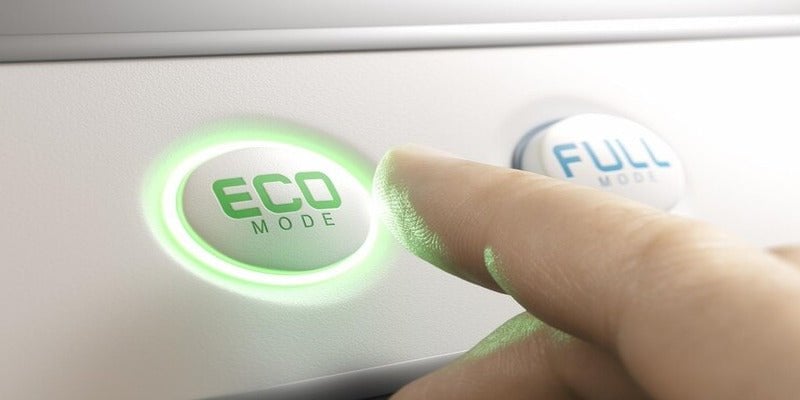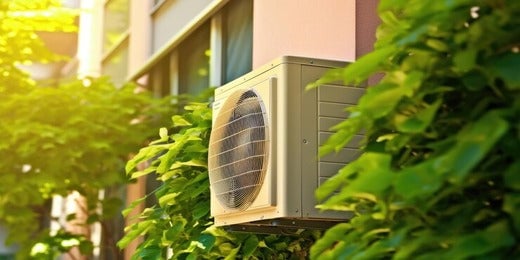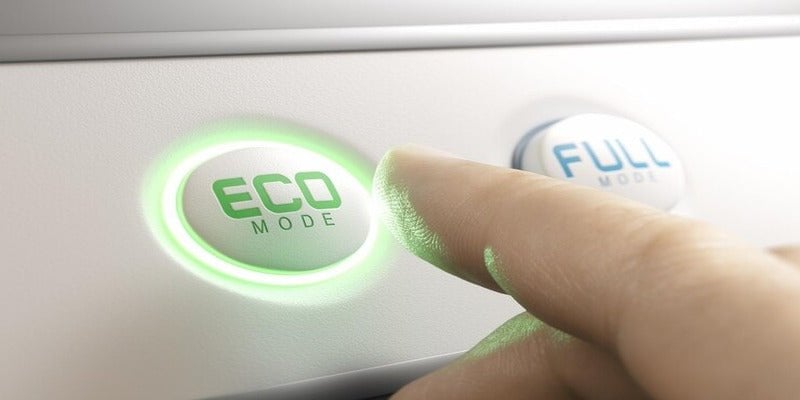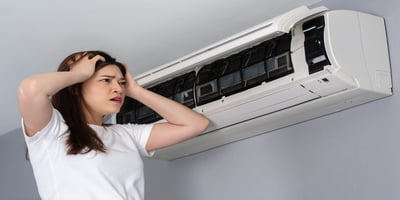Decoding Eco Mode: Unveiling the Energy-Saving Potential of Your Air Conditioner

Enter "Eco Mode" – a feature that promises not only to save electricity and keep us cool but also to do so with an environmentally conscious and budget-friendly twist. But what exactly is Eco Mode, and how does it work? More importantly, how can we harness its energy-saving potential while ensuring our indoor comfort remains uninterrupted?
In this article, we embark on a journey to decode the mysteries of Eco Mode in your air conditioner. We'll unravel its inner workings, explore its eco-friendly advantages, and equip you with the knowledge to make the most of this innovative feature. So, if you've ever wondered about the 'Eco' button on your your AC unit or remote or wanted to reduce your energy consumption without compromising comfort, read on as we unveil the secrets of Eco Mode and help you make your cooling system work smarter and greener.
What is Eco Mode?
Eco Mode, short for "Economy Mode," is a specialized feature found in many modern air conditioning systems. Its primary purpose is to enhance energy efficiency and reduce environmental impact while maintaining indoor comfort. In essence, Eco Mode represents a more eco-conscious approach to air conditioning, aligning the cooling process with sustainability goals.

How Does Eco Mode Work?
Eco Mode operates by making subtle adjustments to the way your air conditioner cools your space. Here's how it works and why it stands apart from regular cooling modes:
- Temperature Regulation: In standard cooling modes, air conditioners work tirelessly to reach and maintain the desired temperature, often resulting in cycles of rapid cooling followed by brief rest periods. Eco Mode, on the other hand, adopts a more gradual and steady approach. It strives to maintain a comfortable temperature range rather than exact precision, allowing for minor fluctuations.
- Fan Speed Control: Eco Mode typically lowers the fan speed automatically, which results in less forceful air circulation. This gentle airflow reduces energy consumption, minimizes temperature disparities, and prevents overcooling.
- Compressor Optimization: The heart of any air conditioner is its compressor, responsible for cooling the refrigerant. In Eco Mode, the compressor operates more efficiently, cycling cool mode on and off less frequently. This optimized compressor behavior not only saves energy but also prolongs the lifespan of the unit.
- Energy-Saving Algorithms: Many air conditioners with Eco Mode incorporate advanced algorithms that analyze the surrounding environment, including factors like room temperature, humidity, and outdoor conditions. This data allows the system to make intelligent decisions about when to run, how long to operate, and at what intensity.
- Setback Temperatures: Eco Mode often incorporates setback or auto mode for setback temperatures. This feature enables the air conditioner to reduce cooling when the room is not occupied or during nighttime hours, automatically raising the temperature slightly to conserve energy without sacrificing comfort.

Optimizing Energy Consumption and Cooling Efficiency:
The key benefit of Eco Mode in ac, is its ability to strike a balance between cooling efficiency and energy conservation. By adopting a less aggressive cooling approach and leveraging intelligent algorithms, Eco Mode optimizes energy consumption in several ways:
- Reduced Energy Consumption: Eco Mode can lead to significant energy savings by moderating the cooling process. It ensures that the air conditioner operates only as much as necessary to maintain a comfortable temperature, reducing unnecessary energy expenditure.
- Extended Equipment Life: By reducing the frequency of compressor cycling and minimizing wear and tear, Eco Mode can extend the lifespan of your air conditioning system, potentially saving you money on maintenance and replacement costs.
- Environmental Benefits: Eco Mode's energy-efficient operation aligns with eco-friendly practices, reducing carbon emissions and the overall environmental footprint associated with cooling your space.
Energy Efficiency and Cost Savings:
One of the most compelling advantages of utilizing Eco Mode in your air conditioner is its remarkable impact on energy efficiency and power consumption and, consequently, cost savings. Here's how Eco Mode can help you save both energy and money:
- Reduced Electricity Bills: Eco Mode operates on a principle of moderation. By maintaining a comfortable temperature range instead of aiming for precise temperature control, it consumes less electricity. This means lower energy bills while still enjoying a comfortable indoor environment.
- Minimized Overcooling: Traditional cooling modes often lead to overcooling, where the air conditioner works relentlessly to achieve the set temperature. Eco Mode's gentler approach prevents this overcooling phenomenon, reducing unnecessary energy expenditure.
- Optimized Compressor Operation: Eco Mode's optimized compressor behavior ensures that it operates efficiently, with fewer frequent cycles. This not only saves energy but also prolongs the life of the compressor, reducing maintenance and replacement costs.
- Setback Temperatures: Eco Mode's ability to automatically adjust the temperature slightly during unoccupied or nighttime hours further contributes to energy savings. It avoids excessive cooling when it's not needed, which adds up to substantial cost reductions over time.
- Energy-Saving Algorithms: Many air conditioners equipped with Eco Mode employ advanced algorithms to make intelligent decisions about when and how to operate. These algorithms take into account various environmental factors, fine-tuning the cooling process for maximum efficiency.
Environmental Impact:
Eco Mode goes beyond cost savings; it also carries significant environmental benefits, aligning with sustainability and responsible resource usage:
- Reduced Carbon Footprint: By reducing energy consumption and operating more efficiently, Eco Mode helps decrease the carbon emissions associated with your air conditioning system. This is particularly important in the context of global efforts to combat climate change and reduce greenhouse gas emissions.
- Conservation of Resources: Energy-efficient operation conserves precious natural resources, such as fossil fuels and electricity. By using less energy to cool your space, you contribute to the preservation of these resources for future generations.
- Environmental Responsibility: Operating your air conditioner in Eco Mode reflects a commitment to environmental responsibility. It demonstrates your willingness to reduce your ecological impact and engage in sustainable practices.
- Compliance with Regulations: In some regions, there are regulations and incentives in place to encourage energy-efficient cooling practices. Utilizing Eco Mode may help you comply with these regulations and take advantage of related benefits.
- Positive Reputation: Embracing environmentally friendly practices, including the use of Eco Mode, can enhance your brand's reputation. Consumers increasingly favor businesses that demonstrate a commitment to sustainability, which can translate into customer loyalty and goodwill.

When and How to Use Eco Mode?
Understanding when and how to use Eco Mode in your air conditioner is crucial to harnessing its energy saving money and benefits while maintaining indoor comfort. Here are some practical guidelines on when and how to use Eco Mode effectively:
- Hot Summer Days:
When: Eco Mode is especially effective during scorching summer days when you need continuous cooling.
How:
- Use Eco Mode during peak daylight hours when the heat is most intense.
- Set your desired temperature within a comfortable range, allowing Eco Mode to work gradually to maintain it.
- Ensure doors and windows are closed to prevent heat from entering your cooled space.
- Mild Temperatures:
When: Eco Mode is well-suited for days with milder temperatures, typically during early mornings and late evenings.
How:
- Set the temperature slightly higher or lower (depending on your cooling or heating needs) than usual during these times.
- Let Eco Mode take care of maintaining the desired temperature range without the need for aggressive cooling or heating.
- Nighttime Cooling:
When: Eco Mode is ideal for nighttime cooling, ensuring you remain cool air comfortable while sleeping.
How:
- Program Eco Mode with a slightly higher temperature setting compared to daytime to promote energy savings.
- Make use of setback temperatures to allow for a minor temperature increase during the night when you're less sensitive to heat.
- Unoccupied Spaces:
When: When you're leaving your space unoccupied for an extended period, such as during work or vacation.
How:
- Set the thermostat to a more moderate temperature, ideally within a setback range.
- Activate Eco Mode to conserve energy while preventing extreme temperature fluctuations.
- Energy Conservation Focus:
When: When you're specifically looking to reduce energy consumption and environmental impact.
How:
- Choose Eco Mode as your default setting for day-to-day cooling or heating.
- Ensure doors and windows are properly sealed to maximize energy efficiency.
- Humid Environments:
When: In humid climates or seasons, Eco Mode can be beneficial for maintaining indoor comfort without excessive cooling.
How:
- Set a comfortable but slightly higher temperature to reduce humidity.
- The lower fan speed in Eco Mode can help dehumidify the air more effectively.
- Personal Comfort Preferences:
When: When you're comfortable with minor temperature fluctuations and prioritize energy conservation.
How:
- Experiment with Eco Mode settings to find the temperature range that best suits your comfort level.
- Be open to subtle temperature adjustments, allowing Eco Mode to work its energy-saving magic.
- During Peak Energy Hours:
When electricity bill is: During peak energy demand hours when electricity costs are higher.
How:
- Adjust your thermostat settings to a more energy-efficient range.
- Utilize Eco Mode to minimize energy consumption during these costly periods.

Conclusion
In a world where environmental consciousness and energy efficiency are paramount, Eco Mode emerges as a beacon of hope within the realm of air conditioning. We embarked on this journey to decode Eco Mode, revealing its inner workings and showcasing how it can transform the way we modern air conditioners cool and heat our indoor spaces.
Eco Mode isn't just a button on your air conditioner's remote; it's a pathway to a more sustainable and cost-effective future. By embracing Eco Mode, you empower yourself to reduce energy consumption, lower your electricity bills, save energy, and minimize your carbon footprint—all while maintaining a comfortable indoor environment.
From its gentle temperature regulation to optimized compressor operation and setback temperature settings, Eco Mode offers a holistic approach to cooling and heating. It's a tool that not only aligns with eco-conscious values but also aligns with your desire for financial savings and equipment longevity.
As you master the art of using Eco Mode effectively—choosing when to employ it and how to set the right temperature ranges—you not only maximize its benefits but also contribute to a greener, more sustainable world. By utilizing Eco Mode, you become a conscious consumer who takes active steps toward responsible resource usage and environmental preservation.
In closing, Eco Mode represents more than a feature on your air conditioner; it represents a commitment to a better, brighter future—one where comfort, economy, and ecology coexist harmoniously. So, the next time you reach for your air conditioner's remote, consider activating Eco Mode, for it holds the power to transform not only your indoor climate but also the world around us.





































.jpg?height=200&name=photo_2024-02-27_19-55-57%20(1).jpg)
.jpg?height=200&name=photo_2024-01-16_18-35-46%20(1).jpg)
